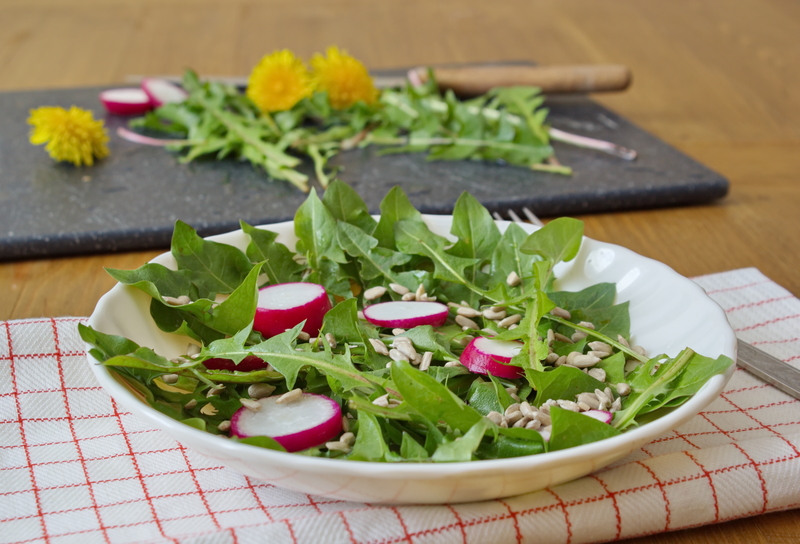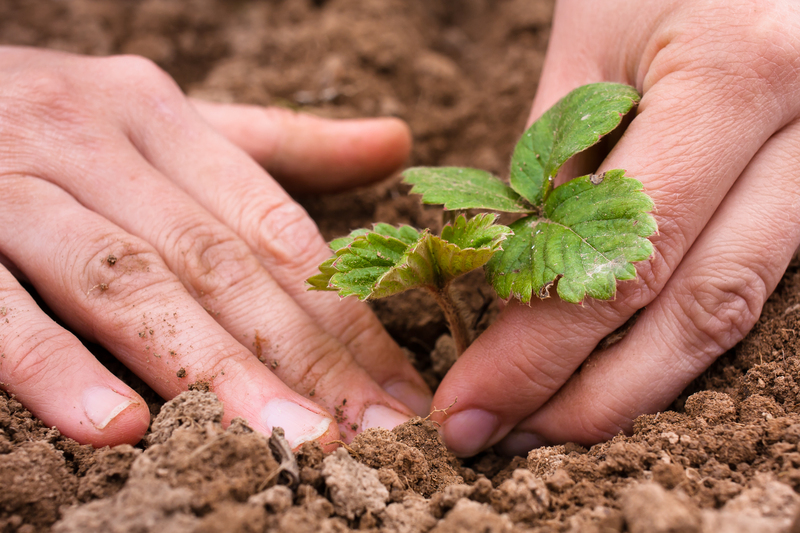Embrace Eco-Friendly Vertical Gardening
Posted on 19/08/2025
Embrace Eco-Friendly Vertical Gardening: Grow Green, Think Upwards!
In the modern urban landscape, space is often limited, but the desire to live sustainably and grow fresh plants is ever-increasing. This is where the concept of eco-friendly vertical gardening takes root--offering an innovative and sustainable solution that not only maximizes urban spaces but also contributes to a healthier planet. If you're eager to add natural beauty to your home or neighborhood while minimizing your environmental impact, vertical gardening might be the perfect green approach.

What Is Eco-Friendly Vertical Gardening?
Vertical gardening is the art and science of growing plants upwards rather than outwards, using structures, containers, or walls. When combined with eco-friendly practices, this gardening technique maximizes plant yield while reducing environmental footprints. Whether mounted on balconies, indoor walls, rooftops, or small urban yards, vertical gardens are fast becoming a symbol of sustainable urban living.
Key Elements of Sustainable Vertical Gardens
- Use of recyclable and renewable materials
- Water conservation techniques
- Minimized use of chemicals and fertilizers
- Selection of native and resilient plants
- Integration of composting and organic practices
The Benefits of Embracing Eco-Friendly Vertical Gardens
Switching to green vertical gardening systems has numerous advantages beyond saving space:
- Air Purification: Plants absorb carbon dioxide, particulates, and other pollutants, improving urban air quality.
- Temperature Regulation: Living walls can act as natural insulation, reducing energy needs for heating and cooling.
- Biodiversity Enhancement: Vertical gardens create new habitats for crucial pollinators like bees, butterflies, and beneficial insects.
- Stress Reduction: Studies show greenery helps reduce anxiety and promote well-being, particularly in crowded cities.
- Maximized Productivity: Limited spaces can yield more crops per square meter when gardens go vertical.
- Water Efficiency: Drip irrigation and hydroponic techniques minimize water wastage.
- Waste Upcycling: Repurpose old pallets, bottles, and containers into unique upcycled planters.
How to Start Your Own Eco-Friendly Vertical Garden
Ready to embrace green vertical gardening? Here's a step-by-step approach to create an efficient, environmentally conscious vertical garden at home or in your community.
1. Choose the Right Location
Assess your available space. Balconies, patios, fences, kitchen walls, or the exterior of buildings are all prime spots for a vertical setup. Make sure the area receives adequate sunlight for the types of plants you plan to grow.
2. Pick Sustainable Materials and Structures
Prioritize sustainable and upcycled materials for your frame and containers. Some great eco-friendly options include:
- Pallet wood (make sure it's untreated or heat-treated)
- Bamboo (renewable and strong)
- Recycled plastic bottles
- Old shoe organizers or fabric pockets
- Metal mesh or wire grids
Avoid single-use plastics and chemically treated materials. If you buy new products, look for items marked as "eco-friendly," "sustainable," or "made from recycled content."
3. Select the Best Plants for Eco-Friendly Vertical Gardens
The right plant selection is crucial. Choose species that thrive in your climate and require minimal care. For a truly sustainable garden, focus on:
- Native plants--they're adapted to local conditions and support wildlife.
- Drought-tolerant species to save water.
- Herbs and vegetables like basil, lettuce, spinach, strawberries, and tomatoes for a productive edible wall.
- Flowering vines (e.g., morning glories, nasturtiums) for color and pollinator support.
*Tip:* Mix different plant types for biodiversity and year-round interest.
4. Install Water-Efficient Irrigation Systems
Implement solutions such as:
- Drip irrigation--delivers water directly to roots, minimizing waste.
- Self-watering planters--contain built-in reservoirs.
- Rainwater harvesting systems--capture runoff and store for later use.
Monitor moisture levels to prevent overwatering, which saves water and reduces the risk of root diseases.
5. Use Organic Soil and Compost
Use high-quality organic soil and enrich it with homemade compost or vermicompost. This not only provides essential nutrients for your plants but also recycles kitchen and garden waste back into your garden.
6. Avoid Harmful Chemicals
Skip synthetic pesticides and chemical fertilizers. Instead, embrace natural pest deterrents like neem oil, garlic spray, or companion planting (growing plant partners like marigold to deter pests).
7. Maintain and Rotate Your Plants
Regularly check for plant health, prune when necessary, and rotate crops seasonally to keep your green wall thriving and productive.
Popular Eco-Friendly Vertical Gardening Techniques
1. Living Wall Panels
Prefabricated panels or DIY setups made from recycled materials, planted with a mix of foliage and flowers, create vibrant green facades on buildings or fences.
2. Pocket Planters
Repurpose fabric shoe organizers or specially designed felt pockets and hang them on walls or railings, filling each pocket with herbs, small edibles, or cascading flowers.
3. Pallet Gardens
Upright wooden pallets make excellent eco-friendly garden frames. Add landscape fabric behind open slats to form planting pockets for herbs, lettuce, and succulents.
4. Bottle Towers
Stacked recycled plastic bottles, filled with soil and placed in a sunny spot, create a stunning and functional green column. Perfect for leafy greens and herbs.
5. Hydroponic Vertical Gardens
Hydroponics uses water instead of soil, significantly conserving water and often speeding up plant growth. Nutrition is delivered directly to the roots--making it eco-friendly when paired with renewable energy sources.
Eco-Friendly Vertical Gardening for Urban Spaces
Cities around the globe are embracing vertical gardens as a solution for urban greening, air purification, and beautification. From massive living walls on office buildings to community hydroponic towers, these projects:
- Reduce city heat island effect
- Absorb noise pollution
- Create urban oases and boost property values
Neighborhoods with more green walls and rooftop gardens show higher biodiversity, improved air quality, and a greater sense of community pride.
Challenges and Solutions in Greener Vertical Gardening
While impactful and sustainable, eco-friendly vertical gardening can face a few hurdles:
- Initial setup costs: Using recycled materials and DIY frames helps reduce expenses.
- Irrigation concerns: Install efficient drip systems and capture rainwater to keep maintenance low.
- Plant selection struggles: Research local native varieties and drought-friendly plants for best results.
- Structural support: Make sure your vertical setup is securely fastened and can hold plants as they grow.
Tips for Making Your Vertical Garden More Eco-Conscious
- Reuse every possible material: Upcycle containers, pallets, and old tools before purchasing new items.
- Save seeds from your harvest: Reduce buying new seeds and preserve organic genetics.
- Compost kitchen waste: Minimize landfill contributions while nourishing your plants.
- Integrate pollinator-friendly plants: Attract bees, butterflies, and beneficial bugs.
- Share your experience!: Teach others about sustainable vertical gardening to multiply your positive environmental impact.
Case Study: Vertical Gardens Revitalizing Cities
From Paris' iconic Musee du Quai Branly living wall to Singapore's lush vertical parks, urban vertical gardens have become the new face of sustainability. These installations not only regulate temperatures and reduce pollution, but they also encourage social interaction and bring beauty into otherwise drab cityscapes. Local households and community groups can replicate these successes on a smaller scale, transforming balconies and shared courtyards into productive, living ecosystems.

Conclusion: Go Vertical, Go Sustainable!
Embracing eco-friendly vertical gardening is more than just a gardening trend--it's a transformative step towards greener, healthier urban living. With sustainable materials, smart plant choices, and responsible watering practices, everyone can maximize their growing power while minimizing their environmental footprint. No matter the size of your living space or your level of experience, vertical gardening offers a powerful way to help the planet and enhance your well-being.
Ready to go green? Gather your tools, tap into your creativity, and let your walls--and your imagination--grow with eco-friendly vertical gardening!
Frequently Asked Questions: Eco-Friendly Vertical Gardening
-
What materials are best for sustainable vertical gardens?
Choose natural, recycled, or upcycled materials like wooden pallets, bamboo, recycled plastics, and fabric made from natural fibers. -
Which plants work best in vertical gardens?
Opt for native, drought-tolerant species, herbs, small vegetables, succulents, and flowering vines. -
How can I minimize water usage?
Install drip irrigation, use self-watering planters, and collect rainwater for a truly water-wise system. -
Do vertical gardens require a lot of maintenance?
With smart plant selection, efficient irrigation, and regular monitoring, maintenance can be minimal and rewarding. -
Can I create an eco-friendly vertical garden indoors?
Absolutely! Use non-toxic containers, select shade-tolerant plants, and position your garden to receive ample natural light.
Embrace the revolution of green urban living -- start your sustainable vertical garden today!
```


